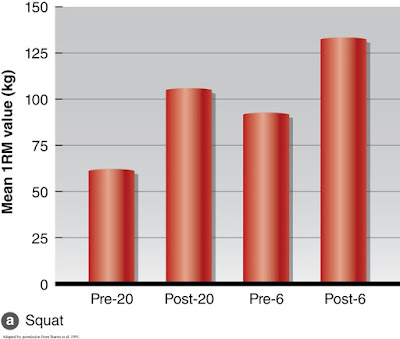It is important
to always keep up with the exercise that we do daily because taking a break
from it for too long can have consequences. Our bodies need to move around and
exercise whether it is a program that you are apart of or just a simple walk in
the morning. It is certainly okay to have a day of rest or modify the exercise
based on how you are feeling that particular day. However, stopping the
exercise that your body is used to for more than two weeks can start to show
changes in the muscles endurance that are being used. This is a term known as
detraining and along with muscle atrophy can also show decreases in the 6 essential qualities of life and sport: balance, coordination, flexibility, endurance, speed and strength.
to always keep up with the exercise that we do daily because taking a break
from it for too long can have consequences. Our bodies need to move around and
exercise whether it is a program that you are apart of or just a simple walk in
the morning. It is certainly okay to have a day of rest or modify the exercise
based on how you are feeling that particular day. However, stopping the
exercise that your body is used to for more than two weeks can start to show
changes in the muscles endurance that are being used. This is a term known as
detraining and along with muscle atrophy can also show decreases in the 6 essential qualities of life and sport: balance, coordination, flexibility, endurance, speed and strength.
Sometimes it is
difficult to keep up with the exercise programs that we are in because we
become busy, but even just getting out and moving makes a huge difference.
There will still be a loss in the muscular endurance if the exercise intensity
is decreased, but it will be substantially less endurance lost than just
sitting around all day. Studies have shown that if the exercise intensity is
decreased by 2/3 of the original training load then there will be losses in
endurance. Even if a few weeks go by and you start to see your endurance being
lost don’t get discouraged but rather get back into whatever exercise you were
doing before. The endurance that you worked so hard for will come back quickly
so it’s always better to not hesitate and get right back to it.
difficult to keep up with the exercise programs that we are in because we
become busy, but even just getting out and moving makes a huge difference.
There will still be a loss in the muscular endurance if the exercise intensity
is decreased, but it will be substantially less endurance lost than just
sitting around all day. Studies have shown that if the exercise intensity is
decreased by 2/3 of the original training load then there will be losses in
endurance. Even if a few weeks go by and you start to see your endurance being
lost don’t get discouraged but rather get back into whatever exercise you were
doing before. The endurance that you worked so hard for will come back quickly
so it’s always better to not hesitate and get right back to it.
This graph below
shows a one repetition maximum in kilograms taken before 20 weeks of training
and one taken after 20 weeks of training. It then shows a 6 week period of no
training after which another measurement was taken and finally after another 6
weeks of training another value was taken. This graph shows how even after
losing the strength in the muscle after 6 weeks of not training it only took
another few weeks to not only get back what was lost but improve on it. These
measurements were taken by RS Staron in 1991 when he was doing a case study on
the detraining and retraining of women.
shows a one repetition maximum in kilograms taken before 20 weeks of training
and one taken after 20 weeks of training. It then shows a 6 week period of no
training after which another measurement was taken and finally after another 6
weeks of training another value was taken. This graph shows how even after
losing the strength in the muscle after 6 weeks of not training it only took
another few weeks to not only get back what was lost but improve on it. These
measurements were taken by RS Staron in 1991 when he was doing a case study on
the detraining and retraining of women.
So the point to
take home here is to never give up on exercise even if a long break has been
taken from it, there is always time to improve and create a healthy lifestyle.
take home here is to never give up on exercise even if a long break has been
taken from it, there is always time to improve and create a healthy lifestyle.
Blog Post by Summer 2016
Intern Matt Leduc.
Intern Matt Leduc.






